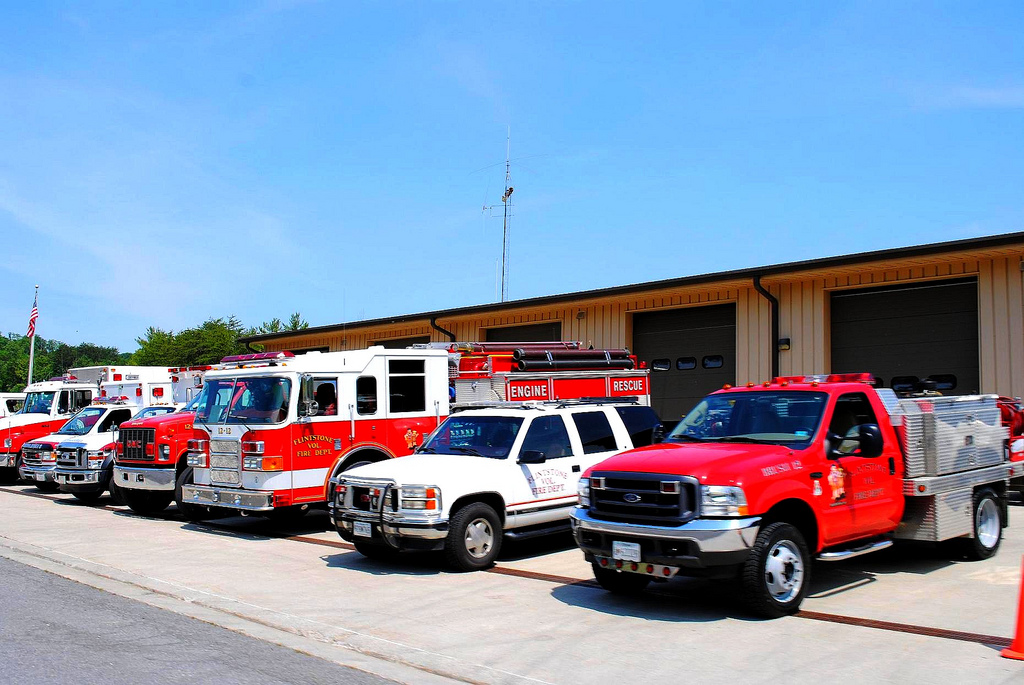
Credit: Lee Cannon via Foter.com CCBY-SA
In a move long anticipated by onlookers, the Department of Commerce and FirstNet on Thursday officially awarded U.S. wireless carrier AT&T a $6.5 billion contract to build out a dedicated network for first responders.
AT&T CEO Randall Stephenson in a statement said AT&T is “honored to work with FirstNet to build a network for America’s police, firefighters, and EMS that is second to none.”
“This is an unprecedented public-private investment in infrastructure that makes America a leader and public safety a national priority,” Stephenson commented.
As part of the 25-year agreement, AT&T will get 20 MHz of prime, clear 700 MHz spectrum and “success-based” reimbursements totaling $6.5 billion over the next five years to support construction of an IP-based, high-speed mobile network that gives priority access to first responders. The carrier said it will work with FirstNet to “innovate and evolve” the network to keep up with technology trends, like the coming shift to 5G. There, AT&T indicated it will collaborate with FirstNet to provide “exponential increases in the speed with which video and data travel across the FirstNet network.”
AT&T is expected to spend some $40 billion over the life of the contract to cover deployment, operation, and maintenance of the network, the DOC said.
The carrier’s partner team includes Motorola Solutions, General Dynamics, Sapient Consulting, and Inmarsat Government, AT&T said.
FirstNet CEO Mike Poth previously indicated that following award of the contract, the organization would “immediately start work” on delivering the buildout. That process, as outlined to the FirstNet board in December, will begin with a series of kickoff meetings to build a consensus between AT&T and FirstNet and have experts from each side come together in collaboration. The first 100 days will also see the pair tackle state plans and everything included in them to secure formal documentation.
“This unique partnership brings together FirstNet as the voice of public safety and a global technology team with a proven track record and commitment to public safety,” Poth said. “Together, FirstNet and AT&T will move with precision and urgency to deliver this much-needed infrastructure to those who need it the most: our first responders.”
First responders today use shared commercial networks for mobile data and applications. This presents a problem when large-scale emergencies happen and the networks become congested, blocking critical communications. The variety of commercial networks used also poses interoperability issues, which further limit first responders’ communication abilities.
The goal of FirstNet is to eliminate these obstacles through the creation of a dedicated, interoperable network that allows first responders to communicate across agencies and local, state, and national jurisdictions. States will have to opt-in to join the network.
AT&T said the new network will better connect first responders to help improve rescue and recovery operations, facilitate further development of public safety-focused Internet of Things and smart city solutions, and enable advanced capabilities in the form of wearable sensors and cameras for police and firefighters and camera-equipped drones and robots that can deliver near real-time images of events, such as fires, floods, or crimes.
But first responders aren’t the only ones who stand to benefit from the network buildout.
Wells Fargo Senior Analyst Jennifer Fritzsche back in December pointed out that 20 MHz of spectrum is a valuable asset for the carrier. Though the airwaves will first and foremost serve public safety users, Fritzsche estimated that those users will (national emergencies aside) consume less than 1 percent of that spectrum – meaning AT&T can use that to boost its own spectrum holdings. Additionally, both New Street Research and Fritzsche indicated AT&T will have plenty of room to grow revenue in the first responder market.
The contract award will also likely be a boon for tower and infrastructure companies, as AT&T moves into the construction phase.
“We expect T will move very quickly to expedite the network build, beginning in less than 9 months, and take up to 12 months to build,” Fritzsche added in a Thursday note. “This expedited build is meaningful to the towers, particularly CCI, AMT, SBAC (in that order) … Recent tower and other RF (radio frequency) industry channel checks show that current plans call for 15K towers to be touched with this initiative by next fall (2018) and 45K+ towers could be touched over the next five years.”




